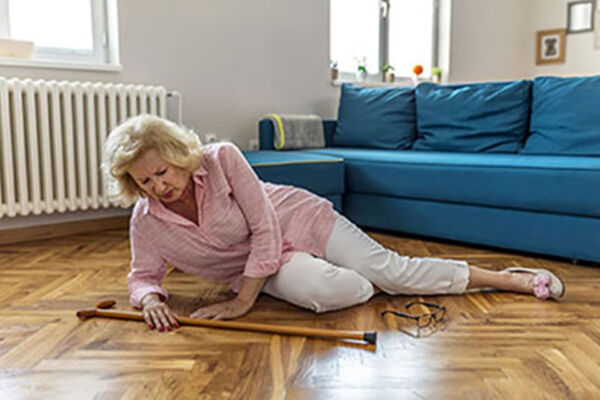
One might think that car accidents, heart disease, and diabetes are the biggest threats to living a long life. Turns out, it’s a hip-breaking fall that shortens life spans.
“Breaking a hip can have serious consequences on an individual’s life span,” says Geoff Fraser, senior vice president of Clear Choice Health Care. Osteoporosis, a condition characterized by weak and brittle bones, increases the risk of fractures, including hip fractures. It is crucial to understand the importance of maintaining strong bones and taking proactive measures to prevent such injuries.
Hip fractures are not gender equal. It’s two times greater in men than in women. Regardless of gender, breaking a hip jump-starts a chain of aging-related events.
Regarding hip fractures: “It can be one of the biggest reasons people are admitted to skilled rehabilitation,” said Fraser, “but it doesn’t have to be tragic…there is recovery.”
Medical experts point out the facts. Most would agree that when you’re bedridden, you become weaker and more susceptible to infections. With less exercise, your arteries become less elastic and more prone to injury. Your immune system becomes more vulnerable to dangerous diseases and infections.
Millions of Americans either have osteoporosis or are at risk for falls due to instability and lack of balance. So when it comes to (not) breaking a hip specifically, here are a few tips from Kosky and other medical experts: Incorporate jumping (20 per day) or simply more weight bearing exercise: Choose calcium and leafy greens (1500 mg in foods / supplements): Consider adding vitamin D3 (1000 IU if under 60, 1200 IU if older): And stretch regularly.
The claim: Jumping 10 times a day twice a day provides greater bone-building benefits than running or jogging, reports a study in the “American Journal of Health Promotion.”
The research: Sixty premenopausal women, ages 25 to 50, significantly increased their hip bone bone mineral density after four months by .5% by jumping 10 times a day, twice a day and taking short breaks (30 seconds) between each jump. Not an exciting gain, but consider this: the controls lost about 1.3% of their bone density over the same period. “Women jumped as high as they could from the floor,” says lead study researcher Larry Tucker, PhD. Note: the study did not include women with osteoporosis; hopping may not be recommended in these cases, says Dr. Tucker.
The claim: Most healthful calcium sources are green leafy vegetables and legumes, or “greens and beans” for short. Broccoli, Brussels sprouts, collards, kale, mustard greens, Swiss chard, and other greens are loaded with highly absorbable calcium and a host of other healthful nutrients. The exception is spinach, which contains a large amount of calcium but tends to hold onto it very tenaciously, so that you will absorb less of it.
The research: It’s not the milk that builds bones. Consider a 12-year Harvard study of 78,000 women, who drank milk three times a day. Turns out they broke more bones than women who rarely drank milk. Experts say greens are best sources of calcium.
The claim: Not all D vitamins are equal. There are two types of vitamin D, which are known as D-2 and D-3. The former is derived from plant sources, while the latter comes from animal sources.
The research: Dr. Laura Tripkovic, lead author in a recent study, says in Medical News Today online, “That vitamin D-3 (found in fish and eggs) is twice as effective as D-2 in raising vitamin D levels in the body, which turns current thinking about the two types of vitamin D on its head.”
The claim: “Stretching prepares you to maneuver to avoid a fall or get up after a fall,” says Kosky, “But don’t go it alone, work with a licensed therapist to safely perform jumping and stretching exercises.”
The research: According to Summit Medical Group, “Stretching helps strengthen muscles and increase flexibility — benefits that are critical to balance and stability that help guard against falling.”
By understanding the link between breaking a hip and its impact on life span, individuals can take proactive steps towards preventing such injuries. Through a combination of proper nutrition, vitamin D supplementation if necessary, and regular exercise routines that focus on building bone mass, we can work towards maintaining strong and healthy bones throughout our lives.
